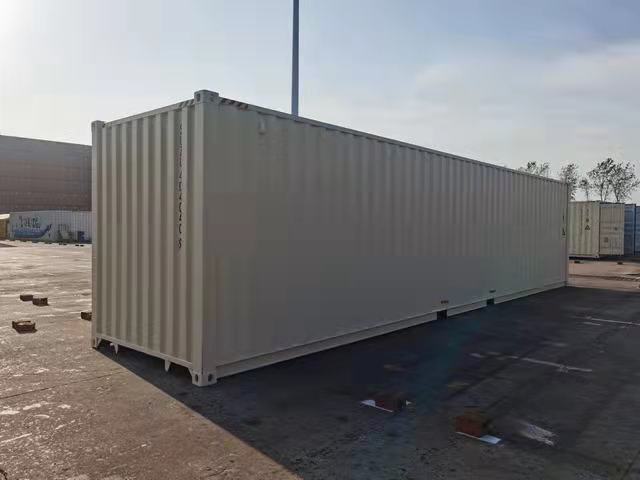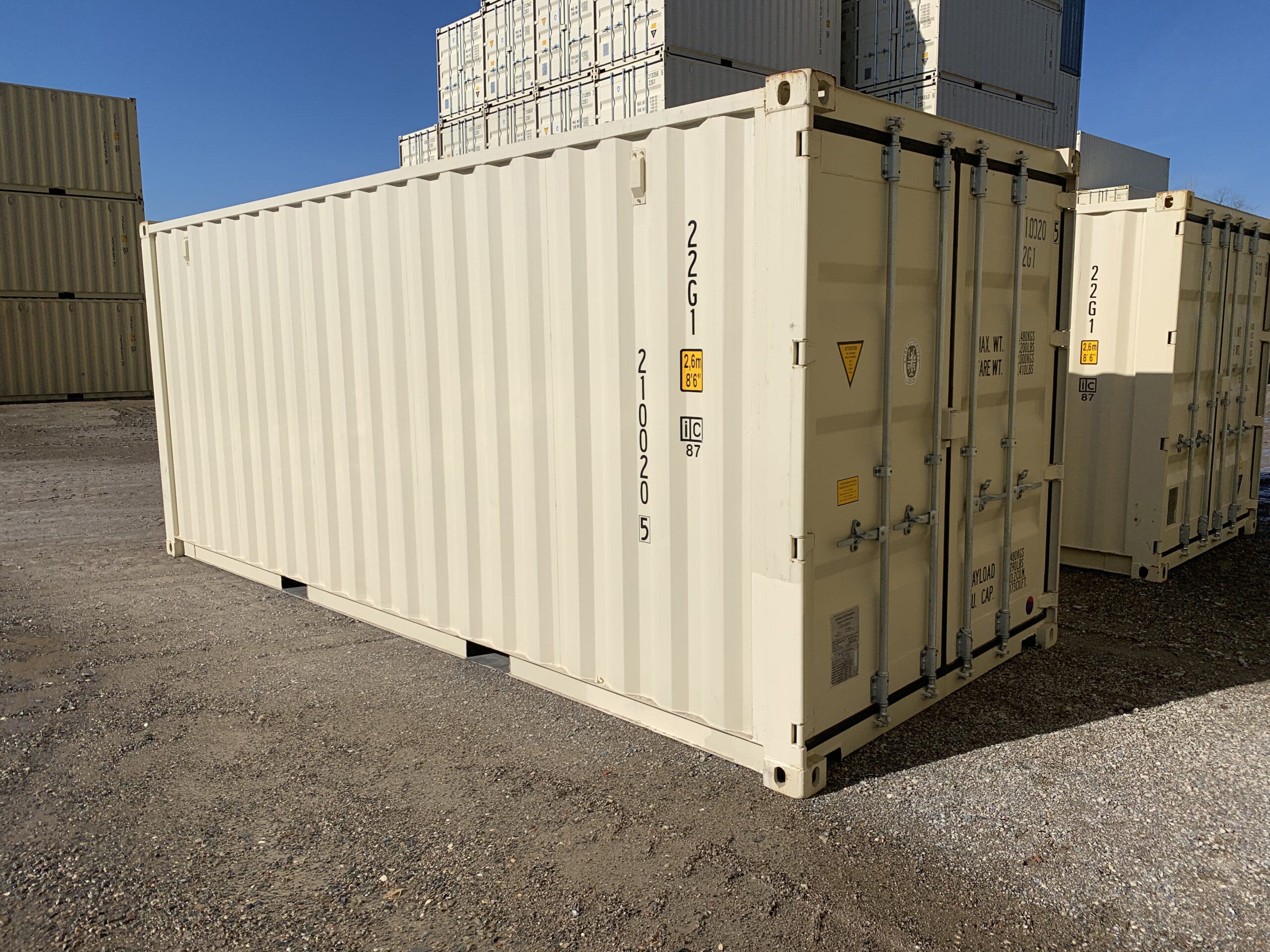Step-by-Step Process to Lease New Shipping Container 40 x 8 x 9.6 for Storage Solutions
Step-by-Step Process to Lease New Shipping Container 40 x 8 x 9.6 for Storage Solutions
Blog Article
The Ultimate Overview to Picking the Right Shipping Container for Your Demands
When it involves picking the appropriate delivery container, understanding your certain needs is important. You'll wish to take into account elements like dimension, kind, and product to ensure you make the very best option. From conventional dimensions to specialized alternatives, there's a great deal to discover. And also, budgeting for both the container and any kind of modifications can make a huge distinction. Allow's break down the vital aspects to assist you locate the perfect suitable for your needs.
Understanding Shipping Container Sizes
When you're selecting a delivery container, recognizing the numerous sizes available is important for making the appropriate choice. Shipping containers generally are available in typical sizes of 20 and 40 feet, but you'll also find other dimensions. Understanding the size you need depends on what you plan to store or transport.If you're moving smaller items, a 20-foot container could be excellent, while bigger deliveries often need a 40-foot container. The height can also vary; high cube containers use extra vertical room, which can be valuable for taller goods.Before determining, gauge your freight, and think about how much room you'll require for packing and unloading. Constantly aspect in possible future demands-- choosing a slightly larger container might save you trouble down the line. Eventually, picking the ideal size will certainly improve efficiency and ensure your products are safe and secure throughout transit
Sorts Of Shipping Containers Available
There are numerous sorts of delivery containers offered, each designed for particular objectives and cargo demands. The common completely dry container is functional, ideal for basic cargo. If you're delivering perishable products, consider a cooled container, which keeps a regulated temperature level. For large things, high cube containers use added height, fitting taller loads.If you require to carry hefty machinery or devices, flat shelf containers provide a durable base without wall surfaces. Open-top containers permit for very easy loading of high cargo, with a removable tarp covering for protection. If you're seeking flexibility, take into consideration a collapsible container that can be easily saved when not in use.Lastly, specialized containers like tank containers are used for liquids, while vented containers are created for bulk cargo that requires ventilation. Understanding your freight kind will certainly aid you choose the best container to satisfy your delivery needs effectively.
Material Considerations for Longevity
When picking a delivery container, the product plays a vital role in its sturdiness. You'll intend to consider the benefits of steel versus light weight aluminum, specifically regarding corrosion resistance. Understanding these factors can help you make a more informed choice for your shipping requires.
Steel vs. Light weight aluminum Containers
Just how do you pick in between steel and aluminum containers for your shipping needs? Begin by thinking about toughness. Steel containers are robust and offer excellent strength, making them excellent for hefty lots and rough problems. They withstand damage from impacts and are often less pricey, which can be a significant element for budget-conscious buyers.On the other hand, light weight aluminum containers are light-weight, which can save you on delivery expenses. They're easier to steer and are a wonderful selection if you require to transport goods frequently. Light weight aluminum is usually extra expensive and much less robust than steel. Consider your particular requirements thoroughly, consisting of weight, expense, and the sort of cargo you'll be delivery, to make the best selection for your circumstance.
Corrosion Resistance Aspects
Choosing the appropriate product doesn't simply involve weight and price; corrosion resistance plays a significant role in durability. When picking a shipping container, take into consideration the environment it'll encounter. Steel containers, while strong, can corrosion otherwise properly dealt with. Try to find alternatives with protective layers or galvanization to boost their life expectancy. Light weight aluminum, on the other hand, supplies natural rust resistance, making it excellent for coastal locations or moist conditions. Nevertheless, it can be extra expensive. Additionally, evaluate the container's use-- if it'll be revealed to chemicals or harsh weather condition, focus on products that can hold up against these conditions. Spending in a corrosion-resistant container currently can conserve you from pricey repairs or replacements down the line. Select intelligently for long-term benefits.
Modifications and Customization Options
Delivering containers aren't just for transferring items; they can be changed to satisfy your particular requirements via numerous modifications and personalization choices. You can convert a conventional container into a comfortable office room, a short-lived retail store, or even a personal health club. The opportunities are almost endless.Think about including home windows, insulation, or ventilation to boost convenience. You may also take into consideration electrical wiring, pipes, or even custom shelving to boost performance. If safety's an issue, reinforced locks can give peace of mind.For visual charm, you can paint the container or include a special layout to make it stick out. Don't forget floor covering choices-- whether you want long lasting plywood or something much more innovative, it can raise the space.Ultimately, customizing your shipping container to match your needs can boost usability and develop a distinct setting that reflects your design.
Evaluating Your Transport Needs
When it involves utilizing your customized delivery container, understanding your transport needs is essential. Beginning by determining what you'll be delivery-- whether it's hefty equipment, retail products, or individual items. Each sort of freight has different demands regarding dimension, weight, and accessibility.Next, take into consideration the distance and setting of transportation. Are you shipping locally, across the country, or internationally? This impacts the container's layout and performance. If you're making use of vehicles, assure your container fits standard measurements for very easy loading and unloading.Additionally, think of transportation conditions. Will your things require unique defense from weather condition or temperature level variations? If so, you could require insulation or ventilation functions in your container.Lastly, examine exactly how frequently you'll be moving goods. Frequent shipments may call for an extra sturdy and versatile container to meet recurring demands. By attending to these variables, you'll be well-prepared to pick the ideal delivery container for your needs.
Budgeting for Your Shipping Container
Setting an allocate your delivery container is necessary for making certain a smooth purchasing procedure. Establish just how much you can manage to spend. Bear in mind that prices can vary considerably based upon dimension, problem, and type. New containers generally cost more, but made use of ones can supply significant savings.Next, think about any type of additional costs you could sustain, such as transportation fees, distribution fees, and modifications. If you plan to tailor the check it out container, aspect in those costs too. Study various providers to compare rates and discover the most effective bargain that satisfies your needs.Don' t forget to consist of any type of permits or laws that may relate to your acquisition and use of the container. By plainly detailing useful site your spending plan, you'll be much better prepared to make informed choices, ensuring you obtain the appropriate container without damaging the bank.
Maintenance and Treatment for Durability
To ensure your delivery container lasts for several years, regular maintenance is vital. Start by evaluating the exterior for corrosion, damages, and damage. If you spot any type of problems, address them right away to stop additional degeneration. Clean the container occasionally, both in and out, to eliminate dust, debris, and dampness that can result in corrosion.Ensure the doors secure properly and lube the joints to avoid corrosion and sticking. If you're making use of the container for storage, take into consideration including ventilation to decrease moisture and mold and mildew growth. For additional defense, use a rust-inhibiting paint or sealant annually.If your container's located in an extreme environment, like coastal areas, you could require to increase maintenance regularity. Maintain an eye on the floor covering, too; any type of indicators of wear should be repaired right away. With these easy actions, you'll expand the life of your delivery container considerably.
Often Asked Concerns
Just how Do I Find a Reputable Delivery Container Vendor?
To locate a reliable shipping container distributor, start by investigating on the internet evaluations, requesting for recommendations from pals or sector contacts, and comparing prices. Always check their qualifications and guarantee they provide high quality containers that satisfy your requirements.

Can I Rental Fee a Delivery Container As Opposed To Buying?
Yes, you can definitely lease a delivery container rather than purchasing one. Many suppliers offer rental alternatives, which can conserve you cash and offer flexibility if you only require it for a brief period.
What Permits Are Required for Container Positioning?

Are Shipping Containers Weatherproof and Appropriate for Outdoor Storage Space?
Yes, shipping containers are normally weatherproof, created to hold up against harsh conditions. Their robust construction keeps your items safe and completely dry, making them appropriate for outside storage space. Just guarantee appropriate ventilation to stop moisture buildup inside.
Just how Do I Transport a Shipping Container Once Purchased?

Report this page